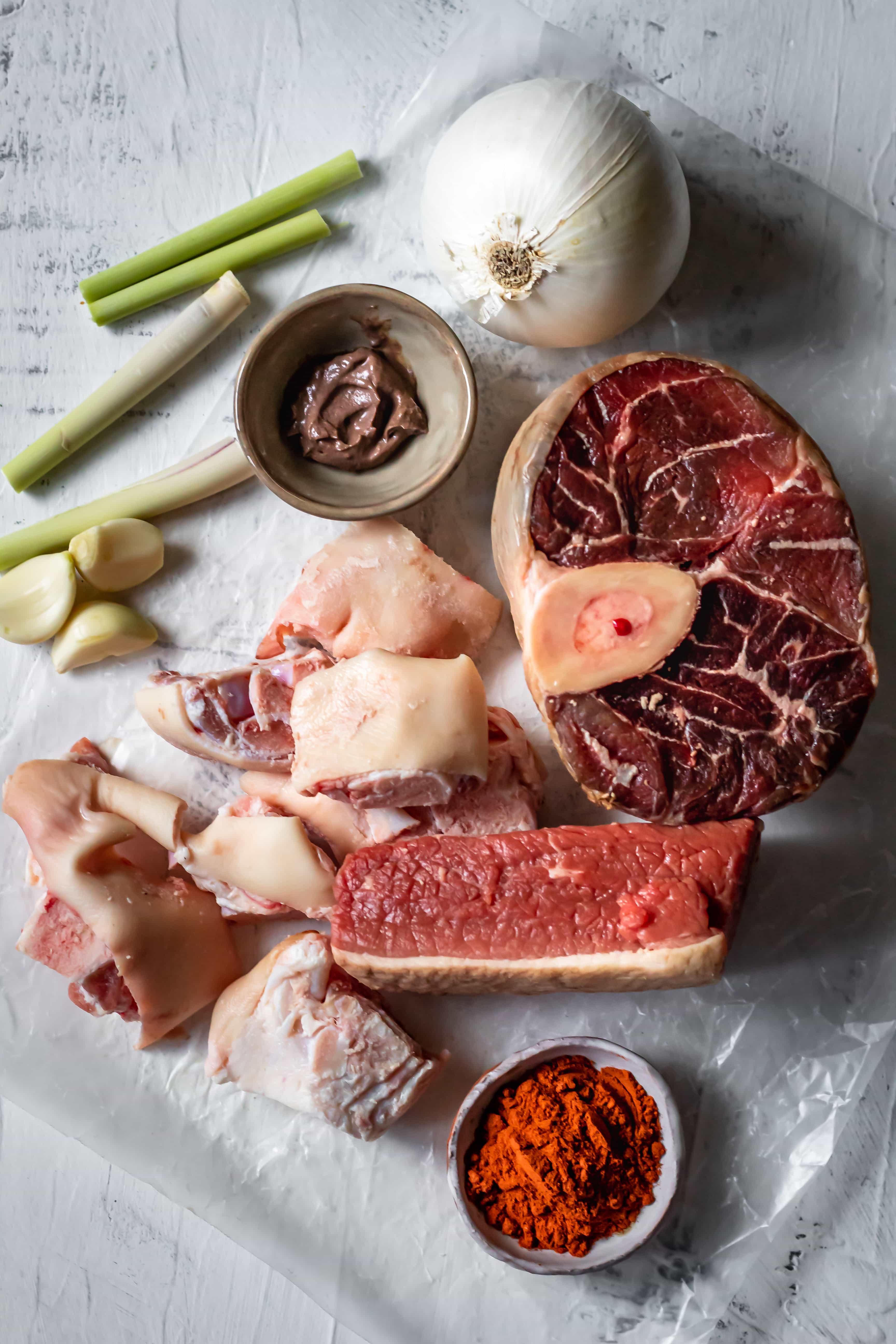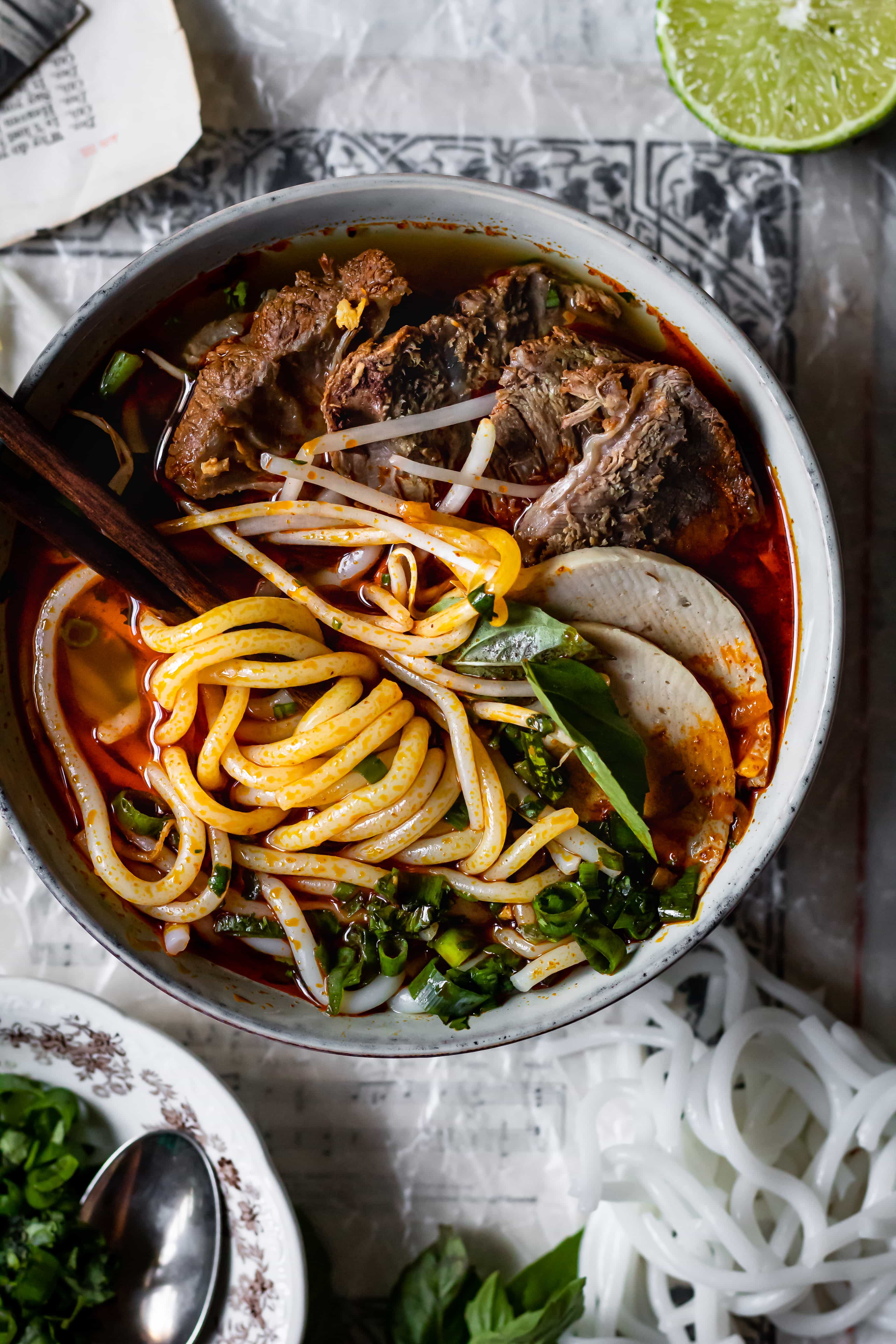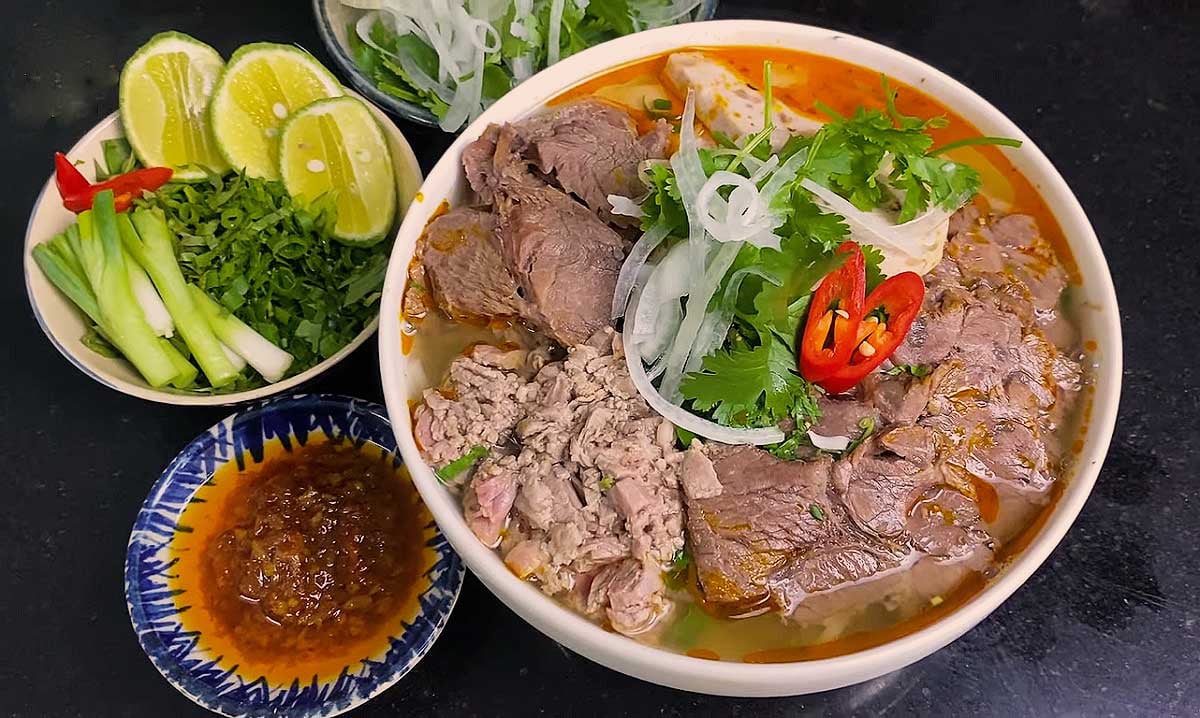Key Takeaways:

- Bun Bo Hue is a traditional Vietnamese noodle soup known for its rich, spicy broth and complex flavors.
- Originating from the city of Hue in Central Vietnam, this dish showcases the region’s culinary heritage.
- The soup typically includes beef, pork, and a variety of herbs and spices, offering a unique taste experience.
- Understanding the ingredients and preparation techniques can enhance your appreciation for this iconic dish.
Introduction to Bun Bo Hue
Bun Bo Hue is more than just a bowl of noodle soup; it is a culinary masterpiece that encapsulates the essence of Vietnamese cuisine. Originating from the imperial city of Hue in Central Vietnam, this dish is renowned for its complex flavors, aromatic broth, and the perfect balance of spicy, savory, and umami notes. Unlike its more famous cousin, Pho, Bun Bo Hue is distinguished by its bold and spicy broth, which is infused with lemongrass, shrimp paste, and chili oil, creating a symphony of flavors that is both captivating and satisfying.
The History and Cultural Significance of Bun Bo Hue
The origins of Bun Bo Hue can be traced back to the city of Hue, the former capital of Vietnam, known for its rich history and royal cuisine. The dish reflects the culinary sophistication of the region, where the emphasis is placed on the harmony of flavors and the use of fresh, local ingredients. Traditionally, Bun Bo Hue was served in the royal courts, and over time, it became a beloved staple in Vietnamese households and street food stalls across the country.
Ingredients that Define Bun Bo Hue
At the heart of Bun Bo Hue is its broth, which is simmered for hours to extract maximum flavor from the bones and aromatics. The key ingredients include:
- Beef Shank and Pork Knuckles: These meats are slow-cooked to tender perfection, adding richness to the broth.
- Lemongrass: This aromatic herb imparts a fresh, citrusy flavor that is quintessential to Bun Bo Hue.
- Shrimp Paste: Adds depth and a slightly briny taste, enhancing the umami profile of the soup.
- Chili Oil: Provides the characteristic heat and vibrant color that Bun Bo Hue is known for.
- Rice Vermicelli Noodles: Thick and chewy, these noodles are the perfect vehicle for the flavorful broth.
How to Prepare Authentic Bun Bo Hue at Home
Creating an authentic Bun Bo Hue at home may seem daunting, but with the right ingredients and a bit of patience, you can recreate this Vietnamese classic. Here’s a step-by-step guide:

1. Preparing the Broth

Start by blanching the beef shank and pork knuckles to remove impurities. Rinse them thoroughly and place them in a large pot with water. Add lemongrass stalks, onion, and ginger for aromatics. Let the mixture simmer for at least three hours, skimming off any foam that rises to the surface.
2. Seasoning the Broth
Once the broth is rich and flavorful, season it with shrimp paste, fish sauce, and a touch of sugar to balance the flavors. Adjust the seasoning to your taste, ensuring a harmonious blend of salty, sweet, and savory notes.
3. Assembling the Dish
Cook the rice vermicelli noodles according to the package instructions. In serving bowls, place a generous portion of noodles, topped with slices of beef shank and pork knuckles. Ladle the hot broth over the noodles, ensuring each bowl is brimming with flavor.
4. Garnishing
Top your Bun Bo Hue with fresh herbs such as cilantro, mint, and Thai basil. Add a squeeze of lime juice, bean sprouts, and thinly sliced onions for added freshness and crunch. For those who enjoy extra heat, a dollop of chili oil or fresh chili slices can elevate the dish to new heights.
Why Bun Bo Hue Stands Out in Vietnamese Cuisine
Bun Bo Hue is celebrated for its robust flavors and its ability to showcase the diversity of ingredients and cooking techniques that define Vietnamese cuisine. Unlike other noodle soups, Bun Bo Hue is a celebration of contrasts: the fiery heat of the chili oil, the umami depth of the shrimp paste, and the refreshing brightness of the herbs. Its unique flavor profile and historical roots make it a must-try for anyone interested in exploring the culinary landscape of Vietnam.

Exploring Bun Bo Hue Variations
While the traditional Bun Bo Hue recipe is a classic, there are numerous regional and modern variations that offer a different take on this beloved dish. Some popular variations include:
- Bun Bo Hue Chay: A vegetarian version that substitutes meat with tofu and mushrooms, maintaining the dish’s signature flavors without animal products.
- Bun Bo Hue with Crab: Incorporates crab meat for an added layer of sweetness and richness.
- Spicy Bun Bo Hue: For those who crave extra heat, this version includes additional chili oil and fresh chilies.
Embrace the Flavors of Bun Bo Hue
Bun Bo Hue is a testament to the rich culinary heritage of Vietnam, offering a taste experience that is both unique and unforgettable. Whether you are a seasoned food enthusiast or a curious newcomer, this dish invites you to explore the vibrant flavors and cultural significance of Vietnamese cuisine. By understanding its history, ingredients, and preparation methods, you can truly appreciate the artistry behind each bowl of Bun Bo Hue. So, gather your ingredients, embrace the cooking process, and savor the delightful journey into the heart of Vietnamese gastronomy.